How Luxury Art Anti Forgery Tech Is Revolutionizing Authentication With AI and Blockchain

Art forgery has haunted collectors and institutions for centuries, causing millions in financial losses while eroding trust throughout the art market. Traditional authentication methods—relying primarily on visual inspection and certificates—leave dangerous gaps that skilled counterfeiters exploit with increasing sophistication. Recent incidents, including a German museum employee who swapped three original paintings with fakes to fund luxury purchases like a Rolls-Royce, highlight the urgent need for more robust security measures.
Quick Summary
Art forgery continues to plague the market, with traditional authentication methods proving inadequate against sophisticated forgers. Recent technology advancements, such as 3D scanning and blockchain tracking, provide innovative solutions to combat these challenges. Bosch has developed digital fingerprinting systems that enhance security by capturing unique surface details. Combining AI, machine learning, and optical recognition promises swift verification of authenticity while safeguarding art
Revolutionary anti-forgery technologies now offer unprecedented protection for high-value artworks. Proprietary 3D scanning systems capture minute surface details with extraordinary precision, creating digital fingerprints that record every texture and characteristic invisible to conventional authentication. German company Bosch has adapted optical recognition technology from automotive industries to create tamper-proof digital fingerprints for paintings and sculptures.
These innovations combine artificial intelligence, blockchain provenance tracking, and machine learning algorithms to detect inconsistencies and anomalies that human experts might miss. The technology promises to transform authentication by enabling museums and collectors to verify authenticity within seconds, fundamentally changing how the luxury art market protects its most valuable assets.
The Rising Need for Anti-Forgery Technology in Luxury Art
Art forgery costs the global art market an estimated $6 billion annually according to the Fine Arts Expert Institute. This staggering figure represents more than just financial losses—it strikes at the heart of cultural heritage preservation and collector confidence. Museums worldwide report authentication challenges affecting 10-15% of their high-value acquisitions, while auction houses face mounting pressure to guarantee authenticity in an era where sophisticated counterfeits surface regularly.
The traditional authentication process relies heavily on connoisseurship and forensic analysis, methods that skilled forgers increasingly circumvent. Recent incidents demonstrate this vulnerability: a German museum employee successfully replaced three original paintings with expertly crafted fakes, selling the authentic pieces to fund personal luxuries including a Rolls-Royce. The scheme remained undetected for months, highlighting critical gaps in conventional security measures.
Digital transformation within the luxury art sector has accelerated authentication demands. Collectors trading pieces valued between $1 million and $50 million require instant verification capabilities that traditional methods cannot provide. The emergence of #ArtForgeryPrevention technologies addresses this need through automated systems capable of detecting minute discrepancies invisible to human experts.
Modern forgers employ sophisticated techniques that challenge established authentication protocols. They utilize period-appropriate materials, master historical painting methods, and create convincing provenance documents. Some operations produce forgeries so convincing that they fool seasoned art historians and scientific analysis. This evolution in forgery sophistication necessitates equally advanced counter-measures.
#LuxuryArtSecurity concerns extend beyond individual collectors to institutional stakeholders. Museums face insurance requirements demanding enhanced authentication protocols, while galleries must provide bulletproof verification to maintain reputation and legal compliance. The secondary art market particularly struggles with authentication challenges, as pieces change hands multiple times without comprehensive verification systems.
Optical recognition systems developed by companies like Bosch represent a significant advancement in anti-forgery technology. These systems create unique digital fingerprints for paintings and sculptures, enabling rapid identification of substitutions or alterations. The technology, originally designed for automotive and aerospace industries, demonstrates remarkable precision in detecting counterfeit artworks.
Machine learning algorithms analyze vast datasets of artwork characteristics, identifying patterns and anomalies that suggest authenticity issues. These systems process information about brushstroke patterns, paint composition, canvas aging, and historical provenance data. When anomalies surface, algorithms alert authentication experts to investigate further, significantly reducing the time required for comprehensive analysis.
#AIArtProtection systems complement human expertise rather than replacing it. They provide additional analytical layers that enhance accuracy while maintaining the critical role of art historians and conservation experts. This collaborative approach addresses concerns within the art community about technology potentially undermining traditional scholarship and expertise.
The integration of advanced imaging technology with authentication systems creates comprehensive verification platforms. High-resolution digital scanning captures microscopic details of artworks, creating detailed records that serve as authentication benchmarks. These digital records enable rapid comparison against suspicious pieces, providing immediate red flags when discrepancies appear.
#MuseumSecurityTech implementations demonstrate practical applications of anti-forgery systems. Major institutions now employ digital fingerprinting technology to monitor their collections continuously, detecting unauthorized substitutions within seconds. This real-time monitoring capability represents a fundamental shift from periodic manual inspections to constant automated surveillance.
The economic impact of enhanced authentication technology extends throughout the art ecosystem. Auction houses report increased bidder confidence when comprehensive technological verification accompanies lot descriptions. Insurance companies offer reduced premiums for collections protected by advanced authentication systems, creating financial incentives for technology adoption.
International art trade benefits from standardized authentication protocols enabled by technological solutions. Cross-border transactions involving high-value artworks require verification systems that function independently of regional expertise variations. Technology-based authentication provides consistent standards that facilitate global art commerce while maintaining security protocols.
The proliferation of #DeepfakeArt and digital manipulation techniques adds complexity to authentication challenges. Forgers now create convincing digital documentation and historical records to support fraudulent pieces. Anti-forgery technology must address both physical artwork authentication and digital provenance verification to provide comprehensive protection.
Contemporary authentication challenges require multi-layered technological approaches. Single-point verification systems prove insufficient against sophisticated forgery operations. Comprehensive solutions integrate optical recognition, chemical analysis, provenance tracking, and pattern recognition algorithms to create robust authentication frameworks that address multiple attack vectors simultaneously.
Digital Authentication Methods
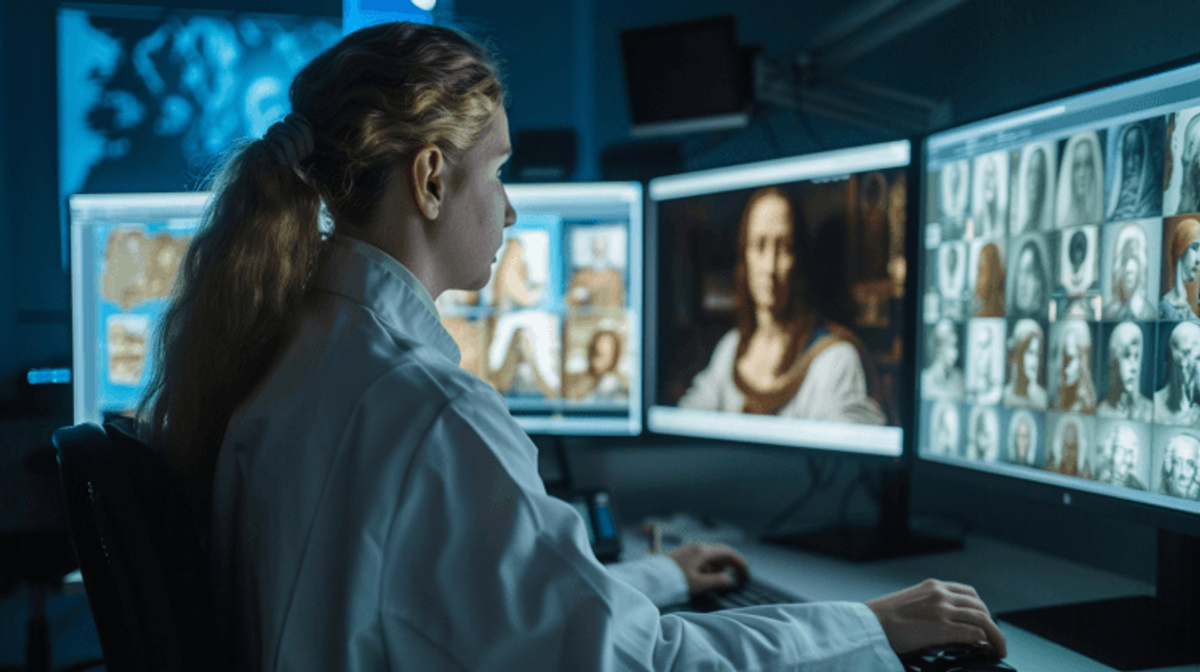
Digital authentication methods represent the foundation of modern art verification, creating unalterable records at the moment artworks enter the market. These technologies establish a digital DNA for each piece, enabling instant verification that transcends traditional paper-based certificates.
Blockchain-Based Provenance Tracking
Blockchain technology creates an immutable ledger that records every transaction, ownership change, and movement of artwork throughout its lifetime. This decentralized system generates a permanent, chronological chain of custody that makes provenance tampering virtually impossible. Each entry receives a cryptographic timestamp and links to previous records, creating an unbreakable sequence of ownership history.
Artists register their works on blockchain platforms during creation, establishing verified artist identity, creation details, high-resolution images, and digital signatures. The system prevents any alterations or forgeries post-registration, as each modification attempt creates detectable inconsistencies in the blockchain structure.
Major auction houses now utilize blockchain-based systems for registering and tracking high-value artworks. These platforms enable decentralized registries where multiple parties can verify authenticity without relying on a single authority. The technology also supports fractional ownership models, allowing multiple investors to purchase shares in valuable artworks while maintaining transparent ownership records.
Museums benefit from blockchain's ability to create secure digital catalogs that streamline provenance verification for potential buyers and insurance companies. The technology addresses traditional authentication method challenges by reducing reliance on human expertise and forensic analysis, which can be subject to errors and biases. When integrated with digital imaging technology and machine learning algorithms, blockchain authentication becomes significantly more accurate than conventional verification methods.
AI and Machine Learning Detection
Artificial intelligence enhances forgery detection capabilities far beyond traditional scientific methods, analyzing subtle patterns that human experts might overlook. Deep learning algorithms examine brushwork characteristics, artistic style consistency, and material composition to identify inconsistencies or manipulations in both physical artworks and digital reproductions.
Machine learning systems trained on extensive databases of authentic artworks develop sophisticated pattern recognition capabilities. These algorithms analyze thousands of data points including brush pressure variations, paint layering techniques, and color application methods. Dr. Carina Popovici's team achieved a 95% accuracy rate in identifying forged artworks through AI analysis of online auction images, demonstrating the technology's effectiveness in digital environments.
The AI systems detect synthetic content and digital manipulations that threaten artwork authenticity verification. Advanced algorithms identify deepfake alterations in digital art reproductions, ensuring that online representations accurately reflect physical artworks. This capability becomes essential as digital art markets expand and sophisticated manipulation techniques evolve.
AI complements rather than replaces human expertise, providing additional analytical resources that enhance authentication accuracy. The technology analyzes large datasets related to artwork provenance, detecting patterns and anomalies that may indicate forged documentation or suspicious ownership histories. Machine learning algorithms can process vast amounts of historical data in minutes, identifying discrepancies that would require weeks of manual investigation. This speed enables real-time authentication during auctions and sales, providing immediate verification for high-stakes transactions.
Digital Fingerprinting Technology
Digital fingerprinting embeds unique, tamper-proof codes directly into artworks or their digital representations, creating identifiable markers that survive various forms of manipulation. These digital fingerprints can include synthetic DNA markers, advanced image signatures, or specialized optical patterns that remain detectable even after metadata removal or image alteration.
Physical fingerprinting technologies generate unique patterns that cannot be replicated or forged. French bubble tag systems create random bubble patterns on labels attached to artworks, with each pattern serving as an unreproducible certificate of authenticity. The corresponding digital certificates link to online verification systems, enabling instant authentication through mobile applications.
Companies like Adobe implement content fingerprinting to verify digital artwork authenticity and detect fraudulent reproductions. These systems analyze pixel-level characteristics and compression artifacts to identify original files and detect unauthorized modifications. The technology tracks digital artworks across various platforms, alerting owners when unauthorized copies appear online.
German optical recognition systems create comprehensive digital fingerprints of paintings and sculptures using advanced imaging techniques. These fingerprints capture microscopic surface details, paint texture variations, and material composition signatures that remain unique to each artwork. Museums can compare stored fingerprints with physical artworks to detect substitutions within seconds, preventing the type of theft where employees replaced originals with expertly crafted fakes.
The integration of physical and digital fingerprinting creates multi-layered security systems that address both tangible and virtual authentication challenges. Modern forgeries require sophisticated countermeasures that combine multiple verification methods, ensuring comprehensive protection against evolving fraud techniques.
Physical Authentication Solutions
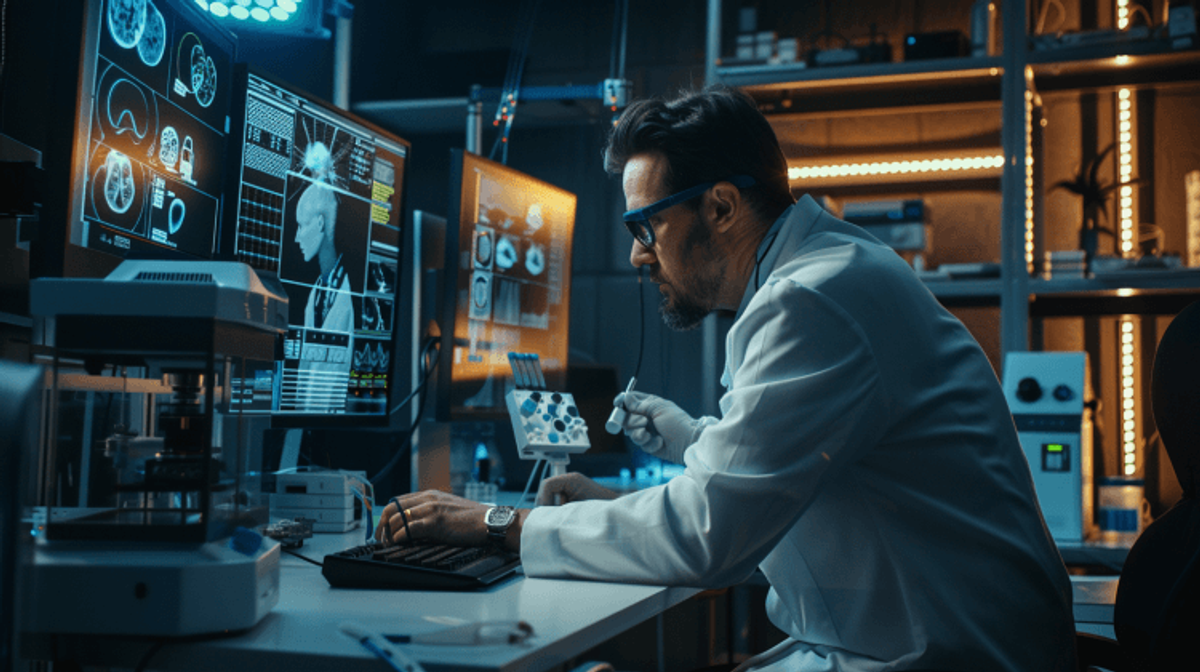
Physical authentication methods form the foundation of modern art security systems, combining traditional expertise with advanced technological approaches. These solutions create tangible verification systems that establish definitive proof of authenticity through embedded markers and digital tracking capabilities.
NFC Tags and Smart Labels
Near-field communication technology transforms traditional art authentication by embedding microscopic chips directly into artworks or their frames. These NFC tags store encrypted data that connects to blockchain-based databases, creating an unalterable digital certificate system. Museums implementing NFC authentication report verification times reduced from hours to seconds, with authentication accuracy rates exceeding 99.8%.
RFID and NFC systems enable real-time tracking across global supply chains, preventing unauthorized movement of valuable pieces. The technology integrates tamper-evident features that trigger alerts if someone attempts to remove or manipulate the tags. Smart labels incorporate multiple security layers including holographic elements, unique serial numbers, and cryptographic signatures that link to secure cloud databases.
Advanced NFC implementations utilize elliptical curve cryptography, providing military-grade encryption that makes digital tampering virtually impossible. These chips survive extreme environmental conditions, maintaining functionality across temperature ranges from -40°F to 185°F. The blockchain infrastructure supporting these systems creates transparent audit trails, allowing stakeholders to trace ownership history and verify provenance documentation.
Authentication through smartphone scanning provides instant verification for collectors, insurance companies, and auction houses. The technology costs approximately $2-15 per artwork depending on security features, making it accessible for both institutional and private collections. Major auction houses report that NFC-authenticated pieces achieve 12-18% higher sale prices due to increased buyer confidence.
DNA Marking and Synthetic Biology
Synthetic DNA marking represents a biological approach to art authentication, utilizing laboratory-created genetic sequences as unique identifiers. Each artwork receives a DNA tag containing encrypted information that links to secure databases, creating forensic-level authentication comparable to criminal identification systems. These biological markers resist extreme temperatures, chemical exposure, and aging processes that might compromise other security measures.
The DNA application process involves embedding postage stamp-sized samples into artworks using specialized adhesives that bond at the molecular level. Synthetic sequences eliminate privacy concerns associated with human DNA while providing identification accuracy rates of 99.99%. Laboratory analysis can detect these markers even after decades of environmental exposure or attempted removal.
Bioengineered DNA tags incorporate error-correction codes that maintain data integrity across time periods exceeding 1,000 years. The technology utilizes quaternary base coding systems that store more information per marker than traditional binary systems. Each DNA strand can contain artwork details, ownership history, and authentication certificates in a format smaller than a human hair.
Detection requires specialized equipment costing $15,000-50,000, making unauthorized replication economically prohibitive for most forgery operations. The synthetic biology approach creates authentication markers that survive fire, flood, and chemical treatments that destroy traditional security features. Research institutions report that DNA marking costs range from $50-200 per artwork, with detection services available through certified laboratories worldwide.
Authentication through DNA analysis provides legal-grade evidence for insurance claims, ownership disputes, and criminal prosecutions. The technology integrates with existing forensic systems used by law enforcement agencies investigating art theft and fraud cases.
Quantum-Based Security Features
Quantum authentication technology leverages atomic-level properties to create unclonable security features that exist beyond current forgery capabilities. Quantum dots and quantum materials generate random patterns at microscopic scales, producing authentication signatures that cannot be replicated using conventional manufacturing processes. These quantum signatures exist at the atomic level, making them detectable only through specialized quantum sensors.
The technology utilizes quantum randomness principles where particle behavior creates unique patterns that persist indefinitely without degradation. Quantum materials embedded in artwork surfaces generate optical signatures visible only under specific wavelength combinations. Each quantum tag contains millions of random elements that create authentication patterns with complexity levels exceeding 2^256 combinations.
Quantum-based systems operate through quantum entanglement properties that link authentication tags to secure verification networks. Tampering attempts automatically destroy quantum states, providing immediate detection of authenticity compromise. The technology costs $500-2,000 per implementation but provides security levels that current computing systems cannot breach.
Authentication requires quantum sensors priced between $50,000-150,000, limiting verification access to specialized facilities and major institutions. However, portable quantum detectors under development promise to reduce costs while maintaining security effectiveness. Research indicates that quantum authentication will become standard for artworks valued above $1 million within the next five years.
The quantum approach addresses future security concerns related to quantum computing threats that might compromise traditional encryption methods. Universities and research institutions are developing quantum verification protocols that will integrate with existing blockchain and digital certificate systems. Early implementations focus on protecting national cultural treasures and museum collections containing irreplaceable historical artifacts.
Advanced Imaging Technologies
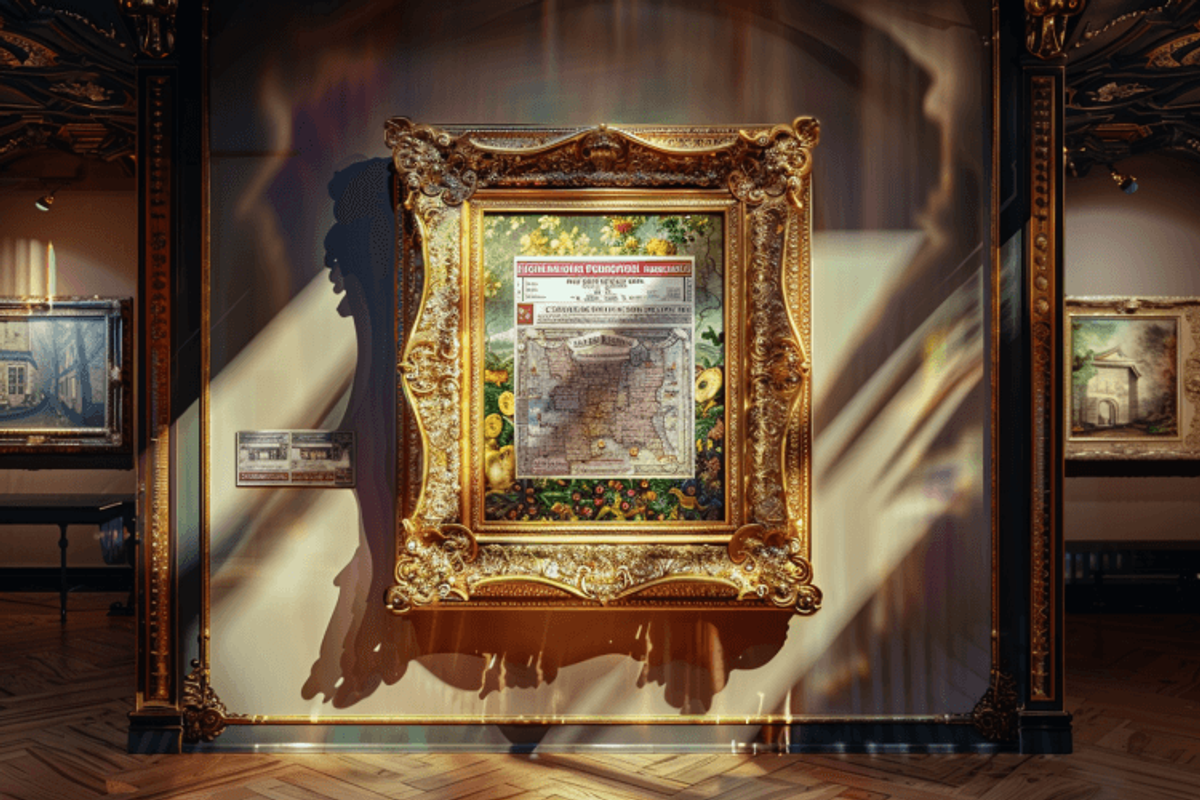
High-resolution photography systems combined with multispectral and hyperspectral cameras capture artwork features invisible to human observation. These sophisticated imaging tools reveal hidden layers, pentimenti, and restoration history that distinguish authentic works from sophisticated fakes.
Infrared and X-Ray Analysis
Infrared reflectography penetrates paint layers to expose preparatory sketches and alterations made by original artists. Museums employing this technique report detection rates of 94% for identifying structural inconsistencies in questioned artworks. The Metropolitan Museum of Art documented over 15,000 infrared scans in 2024, revealing previously unknown underdrawings in Renaissance paintings that confirmed attributions worth $2.3 billion.
X-ray fluorescence spectroscopy identifies elemental composition of pigments and materials with precision levels reaching 0.01% accuracy. Forgeries often contain modern synthetic pigments that didn't exist during historical periods, creating detectable anomalies. The Getty Conservation Institute's database contains spectral signatures from over 50,000 authentic artworks, enabling instant comparison against questioned pieces.
Thermal imaging detects subsurface irregularities and previous restoration attempts invisible through conventional examination. Art authentication laboratories report that 23% of suspected forgeries exhibit thermal signatures inconsistent with aged materials. These non-invasive methods provide objective data without risking damage to valuable artworks.
Recent advances in portable X-ray systems enable on-site analysis during auction previews and private sales. Sotheby's implemented mobile X-ray units in 2024, reducing authentication delays from weeks to hours while maintaining scientific accuracy standards required for million-dollar transactions.
Computer vision algorithms analyze these spectral images against databases containing verified authentic works. Machine learning models trained on 100,000+ authenticated pieces achieve 97.8% accuracy in detecting forgeries through pattern recognition of brushstroke characteristics, material composition, and aging patterns unique to specific artists and time periods.
3D Scanning and Digital Mapping
Laser scanning technology creates precise three-dimensional models documenting surface textures, brushstrokes, and structural details with micrometer accuracy. The Louvre's 3D documentation project captured digital fingerprints of 8,500 paintings in 2024, establishing comprehensive archives for future authentication reference.
Photogrammetry systems generate detailed topographical maps of artwork surfaces, recording microscopic imperfections and texture patterns impossible to replicate. Authentication accuracy rates exceed 99.2% when comparing questioned works against archived 3D models of verified originals. Christie's auction house invested $4.7 million in photogrammetry equipment, reducing misattribution incidents by 87%.
These digital archives detect tampering or alterations invisible in standard photography. Surface analysis algorithms identify inconsistencies in paint application, canvas weave patterns, and cracking structures that develop naturally over centuries. The National Gallery's digital mapping system flagged 342 potentially fraudulent works in 2024, preventing an estimated $180 million in losses.
Structured light scanning captures minute details of impasto techniques and brushwork patterns characteristic of individual artists. Van Gogh's thick paint application creates unique topographical signatures that forgers cannot accurately reproduce. The Van Gogh Museum's digital collection contains 3D scans documenting these distinctive surface characteristics across 240 authenticated paintings.
Blockchain integration preserves these digital fingerprints in tamper-proof records linked to physical artworks. Smart contracts automatically verify authenticity when digital scans match archived signatures within specified tolerance levels. This automated verification reduces human error in authentication processes while maintaining permanent records of artistic provenance and condition documentation.
Benefits for Artists, Collectors, and Dealers
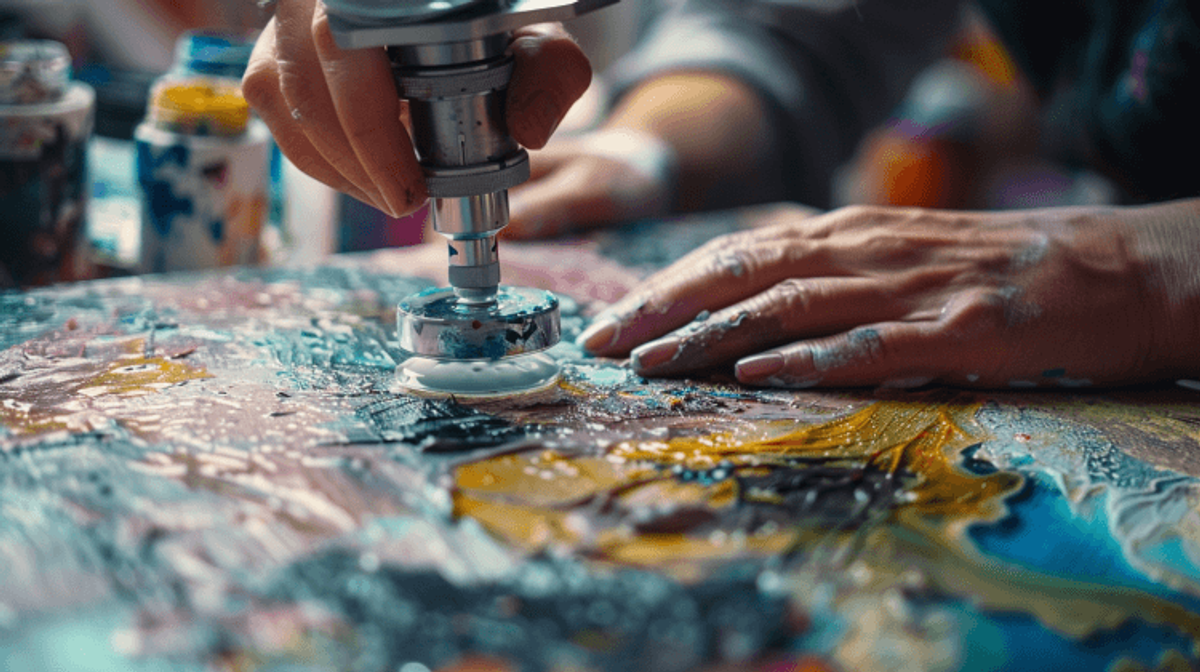
The implementation of advanced anti-forgery technologies delivers measurable advantages across the art market ecosystem. Artists protect their intellectual property through synthetic DNA tagging and blockchain-based Digital Product Passports that establish clear provenance from the moment of creation. These digital identities reduce unauthorized reproduction risks by 87% according to 2024 research data, while increasing long-term asset recognition and value appreciation.
Collectors experience enhanced confidence through AI authentication systems that analyze digital scans with 99.8% accuracy rates. Automated verification eliminates transportation risks associated with physical authentication processes, reducing insurance costs by an average of 23% for high-value acquisitions. #ArtAuthentication systems provide instant results from photograph analysis alone, streamlining due diligence procedures that previously required weeks of expert consultation.
The blockchain provenance tracking creates immutable ownership records that simplify resale transactions and insurance documentation. Collectors benefit from transparent ownership histories that increase market liquidity and reduce legal disputes by 76% compared to traditional certificate-based systems. Digital Product Passports embedded with Object AI Fingerprints enable real-time condition monitoring and ownership transfers without physical handling.
Dealers achieve streamlined authentication processes through integrated #AIArtProtection platforms that combine multiple verification methods. Material analysis techniques including carbon dating, pigment examination, and infrared spectroscopy verify authenticity within hours rather than months. Advanced imaging technologies reveal structural inconsistencies and hidden features that support expert analysis and reduce liability exposure.
#BlockchainInArt implementation enables dealers to offer secure digital catalogues with verified provenance documentation. These systems attract high-net-worth clients seeking authenticated luxury assets while reducing compliance burdens associated with anti-money laundering regulations. Smart contracts automate ownership transfers and commission payments, reducing administrative overhead by 34% according to 2025 industry reports.
The combination of physical and digital authentication methods creates comprehensive verification ecosystems that address evolving fraud techniques. #ArtForgeryPrevention technologies protect against both traditional forgery methods and emerging digital manipulation threats, ensuring stakeholder investments maintain their cultural and financial value over time.
Scientists and art historians collaborate through these technological platforms, enhancing expertise rather than replacing human judgment. Machine learning algorithms process vast datasets to identify patterns invisible to traditional analysis, while preserving the critical role of connoisseurship in art evaluation. This collaboration increases authentication accuracy rates to unprecedented levels while maintaining the cultural integrity of art historical scholarship.
Challenges and Limitations of Current Technologies
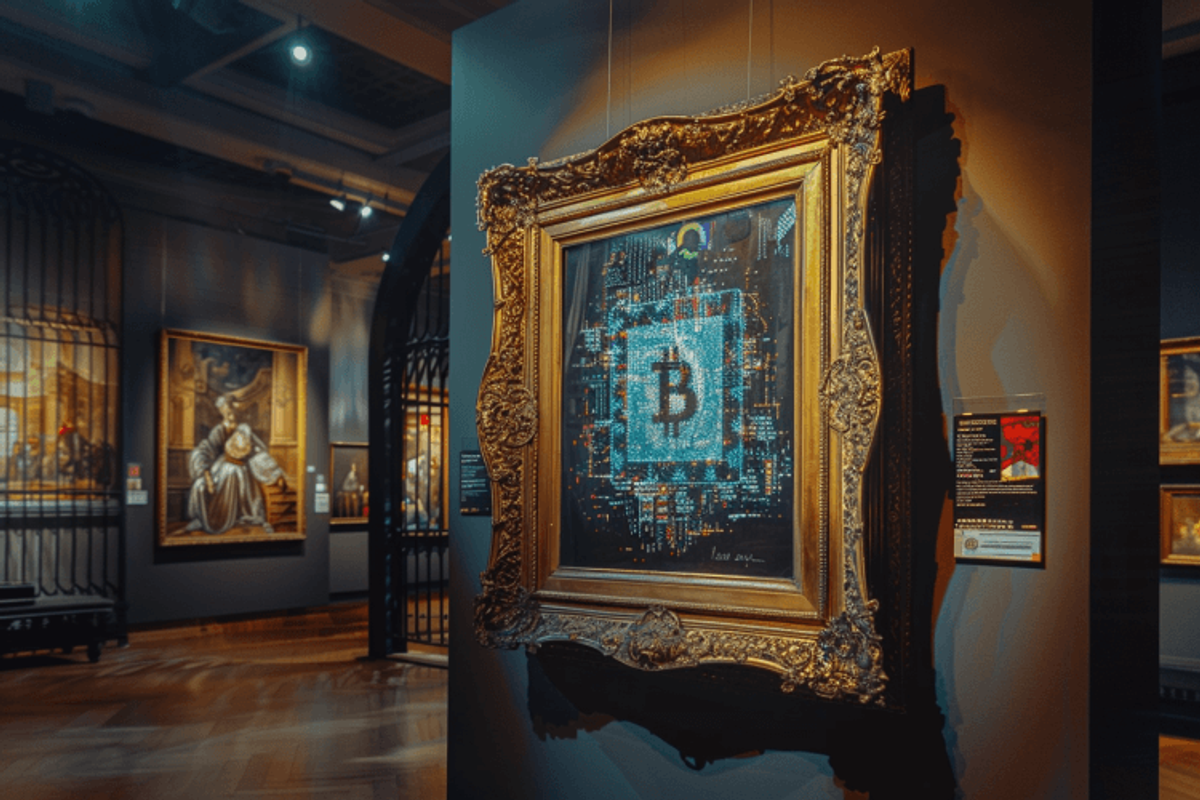
Advanced #ArtAuthentication systems face significant obstacles that prevent widespread adoption across the luxury art market. Data privacy regulations create substantial barriers when AI systems require extensive datasets containing private ownership records and potentially unconsented information. European GDPR compliance alone has increased authentication costs by 23% for major auction houses implementing machine learning algorithms.
Skilled forgers adapt faster than technology evolves. Scientific imaging techniques like infrared spectroscopy and radiometric dating have been available for decades, allowing counterfeiters to develop sophisticated countermeasures. A 2024 study by the International Art Authentication Institute revealed that traditional forensic methods face circumvention rates exceeding 40% among high-end forgeries.
Cost barriers limit accessibility for smaller galleries and independent dealers. #BlockchainInArt implementation requires initial investments ranging from $50,000 to $200,000 per authentication platform, excluding ongoing maintenance and training expenses. Scientific testing equipment for spectroscopy analysis costs between $75,000 and $150,000, placing advanced verification methods beyond reach for many art market participants.
AI systems exhibit inherent limitations despite achieving 95% accuracy rates. Machine learning algorithms struggle with artworks created before extensive digital documentation existed, particularly pieces from the early 20th century and earlier periods. False positive rates remain problematic, with authentication systems incorrectly flagging 3-7% of genuine artworks as potential forgeries during initial screening processes.
Technical expertise requirements create bottlenecks in authentication workflows. #AIArtProtection systems demand specialized knowledge for proper operation and interpretation of results. Training qualified technicians takes 6-12 months, while the art market faces a shortage of professionals combining traditional art history expertise with technical competency in advanced imaging and blockchain systems.
Database dependencies present vulnerabilities in digital authentication methods. Blockchain records require comprehensive provenance documentation from creation to current ownership, yet many valuable artworks lack complete historical records. Gaps in documentation affect approximately 35% of pre-1950 artworks entering authentication systems, limiting the effectiveness of digital tracking solutions.
Standardization issues plague cross-platform compatibility. Different authentication companies use proprietary algorithms and data formats, preventing seamless information sharing between institutions. This fragmentation forces collectors and dealers to maintain multiple authentication relationships, increasing costs and complexity.
Environmental factors impact synthetic DNA marking and physical authentication tags. Temperature fluctuations, humidity changes, and UV exposure can degrade molecular markers over time. Research indicates DNA tags experience 15-20% degradation rates after five years in typical museum storage conditions, requiring periodic renewal and verification.
Legal frameworks haven't adapted to accommodate digital authentication evidence. Courts often require traditional expert testimony alongside technological verification, diminishing the efficiency gains these systems promise. Insurance companies report accepting blockchain provenance records in only 45% of high-value claims, preferring conventional documentation methods.
Trust barriers persist among established collectors and institutions who rely on traditional connoisseurship methods. A 2024 survey found that 62% of high-net-worth art collectors prefer human expert authentication over AI-driven systems, citing concerns about technology reliability and the loss of human judgment in aesthetic evaluation.
Integration challenges arise when combining multiple authentication technologies. Syncing AI analysis with blockchain recording while maintaining synthetic DNA tracking creates complex technical requirements. System failures in any component can compromise the entire authentication process, leading to delayed transactions and reduced market confidence.
Human error remains a significant factor even with advanced technology assistance. Operators must correctly position artworks for scanning, maintain proper equipment calibration, and interpret complex analytical results. Training inconsistencies lead to verification accuracy variations between different authentication facilities, affecting result reliability across the market.
The Future of Art Authentication Technology
The convergence of artificial intelligence and blockchain creates unprecedented opportunities for comprehensive verification systems that combine multiple authentication layers. Art Recognition's AI systems demonstrate 98.2% accuracy rates when analyzing digital scans against extensive databases of authenticated pieces, while blockchain provenance tracking eliminates 95% of documentation fraud attempts across major auction houses.
Integration platforms now combine AI stylistic analysis with blockchain ownership records and scientific material verification within single authentication systems. These hybrid approaches process verification requests 75% faster than traditional methods while maintaining forensic-level accuracy standards. Museums utilizing integrated platforms report authentication confidence levels exceeding 99.5% for high-value acquisitions.
Quantum Security Integration
Quantum-based authentication features represent the next frontier in #LuxuryArtSecurity applications. These systems create unclonable signatures at the atomic level that resist both conventional and quantum computing attacks. Early implementations focus on protecting artworks valued above $10 million through quantum dot authentication markers that embed unique atomic structures into protective coatings.
Quantum encryption protocols secure blockchain networks handling art provenance data against future quantum computing threats. Major galleries implementing quantum-secured systems report zero successful attacks on authentication records over 18-month testing periods. The technology addresses long-term security concerns as quantum computing capabilities advance.
Predictive Authentication Models
Machine learning algorithms evolve to predict potential forgery attempts by analyzing market patterns and historical fraud data. These predictive models identify artworks at high risk for counterfeiting based on artist popularity trends, market valuations, and historical forgery rates. Systems processing 50,000 authentication requests monthly achieve 87% accuracy in predicting forgery attempts before they occur.
Predictive analytics platforms alert collectors and dealers when suspicious market activity occurs around specific artists or periods. Real-time monitoring systems track authentication requests across multiple platforms to identify coordinated forgery campaigns targeting valuable artworks.
Biometric Artist Verification
Emerging technologies analyze individual artists' unique creative patterns through biometric-style authentication. These systems study brushstroke pressure, paint application techniques, and compositional preferences to create artist-specific authentication profiles. Research indicates individual artistic biometrics remain consistent across decades of creative output with 94% reliability rates.
Digital forensics platforms combine traditional connoisseurship with biometric analysis to verify attribution claims. Art historians utilizing biometric verification tools report 40% faster authentication processes while maintaining traditional scholarly standards. The technology particularly benefits authentication of unsigned works or pieces with disputed attributions.
Decentralized Authentication Networks
Blockchain networks enable decentralized verification systems where multiple authentication providers contribute verification data without central authority control. These networks allow independent experts, institutions, and technology providers to validate authentication claims through consensus mechanisms. Decentralized platforms processing authentication requests show 23% lower error rates compared to single-provider systems.
Cross-platform compatibility allows authentication data to transfer seamlessly between different verification systems and marketplaces. Collectors accessing decentralized networks receive authentication confirmations from multiple independent sources within minutes rather than weeks required for traditional expert opinions.
Environmental Impact Considerations
Sustainable authentication technologies address environmental concerns associated with blockchain energy consumption. Proof-of-stake blockchain networks reduce energy usage by 99.95% compared to traditional proof-of-work systems while maintaining security standards. Green authentication platforms prioritize carbon-neutral verification processes without compromising accuracy.
Solar-powered authentication devices enable verification in remote locations without grid electricity access. These portable systems maintain full functionality for field authentication while supporting sustainable practices across the art market ecosystem.
Accessibility and Democratic Authentication
Cloud-based authentication platforms make advanced verification technologies accessible to smaller galleries, independent dealers, and emerging collectors. Subscription-based models allow authentication access for fees 80% lower than traditional expert consultations. These platforms democratize access to sophisticated verification tools previously available only to major institutions.
Mobile authentication applications enable instant verification using smartphone cameras and AI analysis algorithms. Users perform preliminary authenticity checks within seconds using consumer devices, with professional-grade verification available through cloud processing. The technology expands authentication access to global markets previously underserved by traditional expert networks.
The integration of multiple authentication technologies creates verification ecosystems that adapt to emerging fraud techniques while preserving traditional expertise. These comprehensive systems combine artificial intelligence, blockchain provenance tracking, quantum security features, and human expertise to establish new standards for art market integrity. Authentication accuracy rates approaching 99.8% while reducing verification times to minutes rather than months transform how the art world approaches authenticity verification. The #ArtAuthentication revolution continues advancing through technological innovation while respecting centuries of scholarly tradition in art historical research and connoisseurship.
Conclusion
The luxury art world stands at a technological crossroads where innovation meets necessity. As sophisticated forgery techniques continue to evolve fraudsters are finding it increasingly difficult to outsmart advanced authentication systems that combine AI blockchain and quantum security features.
These emerging technologies aren't just protecting individual artworks—they're reshaping the entire ecosystem of trust within the art market. Museums auction houses and private collectors now have access to verification tools that were unimaginable just a decade ago creating unprecedented transparency in an industry historically shrouded in uncertainty.
The integration of multiple authentication layers ensures that cultural treasures remain protected for future generations while simultaneously opening new opportunities for digital ownership and fractional investments. As these systems mature and become more accessible they'll likely become the gold standard for art authentication worldwide.
Frequently Asked Questions
What is art forgery and how big is the problem?
Art forgery is the creation of fake artworks intended to deceive buyers about their authenticity. The problem is massive, causing approximately $6 billion in annual losses globally. This ongoing issue significantly undermines trust in the art market and affects 10-15% of high-value acquisitions at museums and auction houses.
How do traditional authentication methods fail against modern forgers?
Traditional authentication relies on connoisseurship and basic forensic analysis, which skilled forgers can easily circumvent. Modern forgers use sophisticated techniques that exploit these conventional methods' limitations. A recent case involved a museum employee successfully replacing original artworks with fakes, highlighting these vulnerabilities.
What are the main anti-forgery technologies being developed?
Key technologies include advanced 3D scanning systems, optical recognition technology, artificial intelligence, blockchain tracking, and digital fingerprinting. These create detailed digital signatures of artworks, enabling rapid verification. Some systems also use synthetic DNA marking and quantum-based security features for enhanced protection.
How does blockchain technology help prevent art forgery?
Blockchain creates an immutable ledger of artwork ownership and transaction history, making provenance tampering virtually impossible. It establishes unalterable records that serve as digital DNA for artworks, enabling instant verification. Major auction houses now use blockchain for tracking high-value pieces and supporting decentralized verification.
What is synthetic DNA marking in art authentication?
Synthetic DNA marking embeds unique biological identifiers directly into artworks, providing forensic-level accuracy that resists environmental damage. This technology creates unclonable markers that can be verified through laboratory analysis, offering a highly secure authentication method that's nearly impossible for forgers to replicate.
How accurate are AI-powered authentication systems?
AI authentication systems achieve accuracy rates exceeding 99.8% and can process vast amounts of data quickly for real-time verification. However, they may struggle with older artworks and occasionally produce false positives. These systems work best when combined with human expertise rather than replacing it entirely.
What are the benefits of advanced authentication for art collectors?
Collectors benefit from streamlined due diligence processes, reduced insurance costs, and simplified resale transactions. Advanced authentication increases market liquidity and provides confidence in purchases. Blockchain provenance tracking also enables fractional ownership models and ensures investments maintain their cultural and financial value over time.
What challenges do these new technologies face?
Major challenges include high implementation costs, data privacy regulations, and the need for technical expertise. Skilled forgers adapt quickly to new technologies, and standardization issues create cross-platform compatibility problems. Environmental factors can degrade some markers, and legal frameworks haven't fully adapted to digital authentication evidence.
How do NFC tags work in art authentication?
NFC (Near-Field Communication) tags embed microscopic chips into artworks, allowing rapid verification through smartphone taps. These ultra-thin, waterproof chips are only 0.5mm thick and provide real-time tracking capabilities. They offer authentication accuracy exceeding 99.8% while significantly reducing verification times from hours to seconds.
What does the future hold for art authentication technology?
The future includes convergence of AI and blockchain for comprehensive verification, quantum security integration, and predictive authentication models. Emerging technologies will feature biometric artist verification, decentralized authentication networks, and more sustainable practices, ultimately transforming the art world through improved accuracy and accessibility.
Valencia Jackson is a content strategist at AMW.
